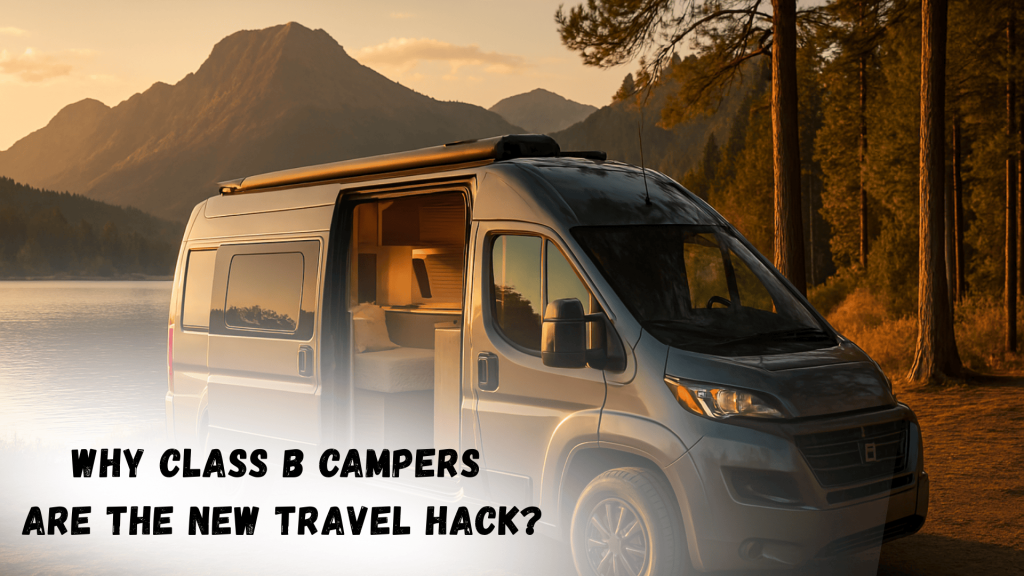Curious about those compact homes on wheels you see cruising highways and parked at scenic spots? Class B campers offer a unique slice of road freedom without the bulk of larger RVs.
These van-based living spaces pack surprising comfort into manageable packages that fit regular parking spaces. Perfect for solo travelers, couples, and weekend warriors, they blend driving ease with essential comforts.
As gas prices climb and nomadic lifestyles gain popularity, these versatile vehicles are capturing the hearts of road trip fans everywhere.
Let’s look at what makes these compact campers special, their key features, and how to decide if van life suits your travel dreams.
Class B Camper Van Explained
Class B camper vans represent the perfect balance between vehicle and home. These versatile vehicles offer the comforts of RV living while maintaining the maneuverability of a standard van, making them increasingly popular among travelers seeking simplicity without sacrificing comfort.
Imagine having the freedom to park almost anywhere, change destinations on a whim, and still enjoy a hot meal and comfortable sleep at the end of the day.
Class B vans have sparked a movement that’s redefining how people experience road travel—compact yet complete, simple yet satisfying, and always ready for the next thrill.
1. What Makes a Class B Special?
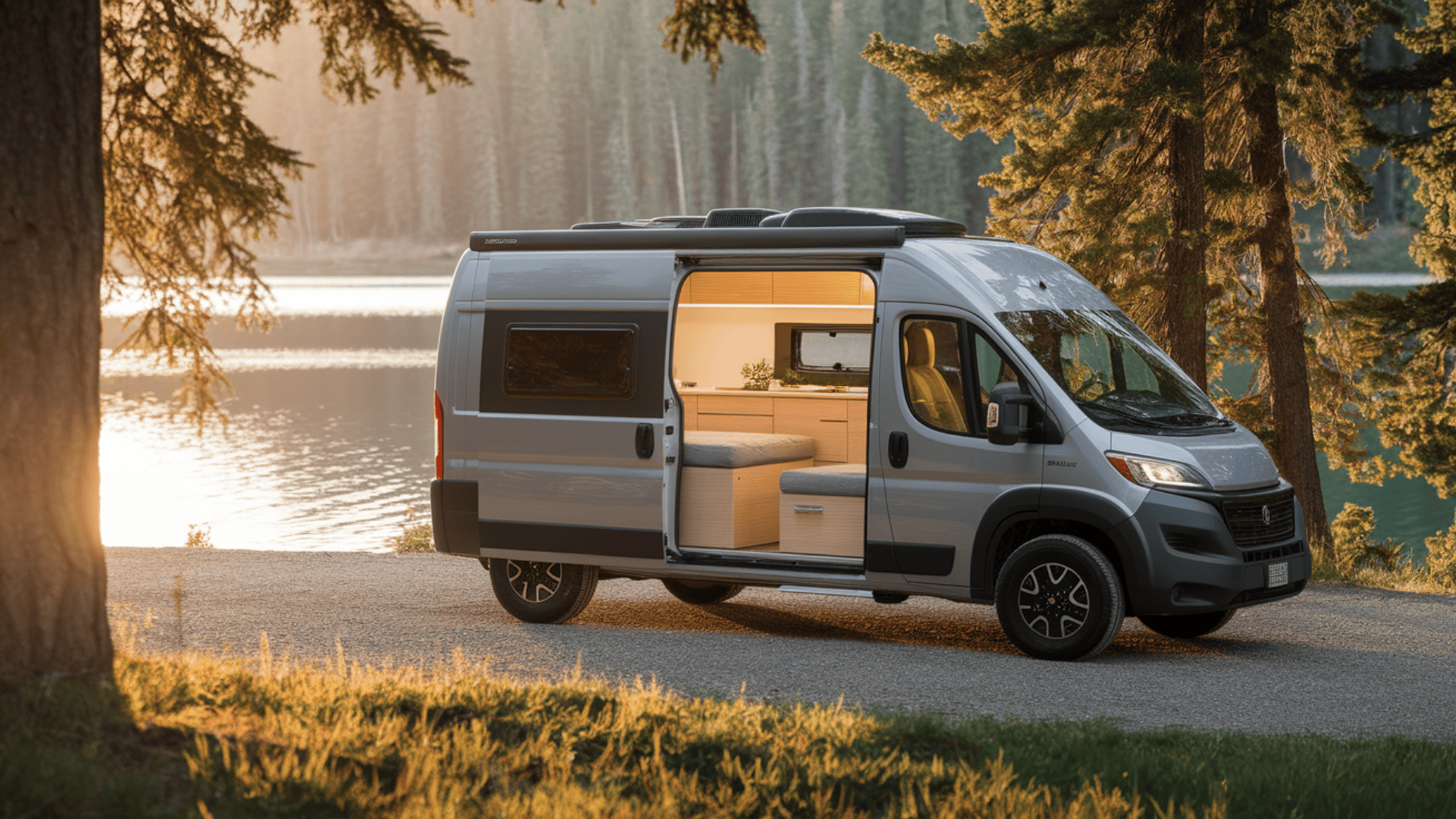
Think of a Class B as your cozy home on wheels! These compact motorhomes are built on normal van frames but pack all you need for life on the road.
Unlike their bigger cousins, these small wonders can fit in most parking spots while still giving you a place to sleep, cook, and freshen up.
Many road fans call them camper vans or van life homes. They’re perfect for those who want to hit the road without the stress of driving a huge vehicle.
2. Key Facts at a Glance:
Before looking at the details, here’s a quick summary of what defines Class B campers. These numbers give you a clear picture of what to expect when considering this type of recreational vehicle.
| FEATURE | DETAILS |
|---|---|
| Size | 16-24 feet long |
| Sleeping | Fits 2-4 people |
| Gas Mileage | 18-25 miles per gallon |
| Cost Range | $40,000-$200,000+ |
These specifications show why Class B vans stand out in the RV market—they offer practical living space while remaining fuel-efficient and manageable for everyday use, though the price range reflects their specialized design and growing demand.
3. Who Thrives in a Class B & What’s Inside
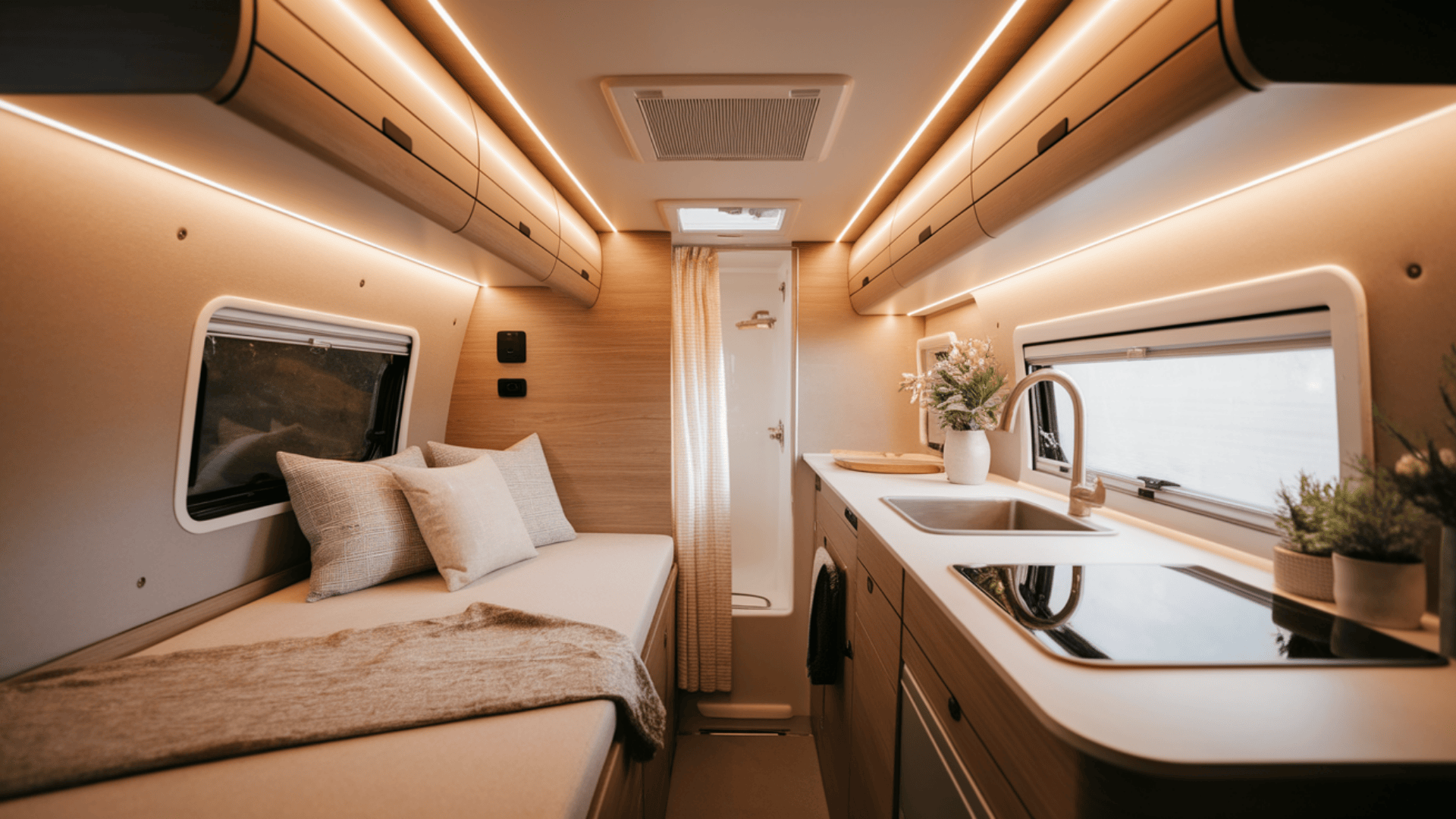
Class B vans are ideal for solo road-trippers, couples, and small families who want a mix of comfort and ease. You can park them in city spots and still have what you need for a good night’s rest.
Step inside, and you’ll find smart use of every inch:
- A comfy bed setup (often with smart folding)
- A tiny yet working kitchen space
- A small bathroom (sometimes with a wet bath design)
- Hidden storage spots for your gear
The tight space creates a snug feeling that many van lifers come to love while offering enough room for essential daily activities.
These vans strike the perfect balance between mobility and comfort, making them a top pick for those who want to keep things simple on the road.
Key Features and Amenities Inside a Class B
While small in size, Class B camper vans make remarkable use of limited space. Manufacturers have mastered the art of fitting essential living features into these compact vehicles, employing innovative designs that transform and adapt to different needs throughout the day.
1. Rest & Relaxation
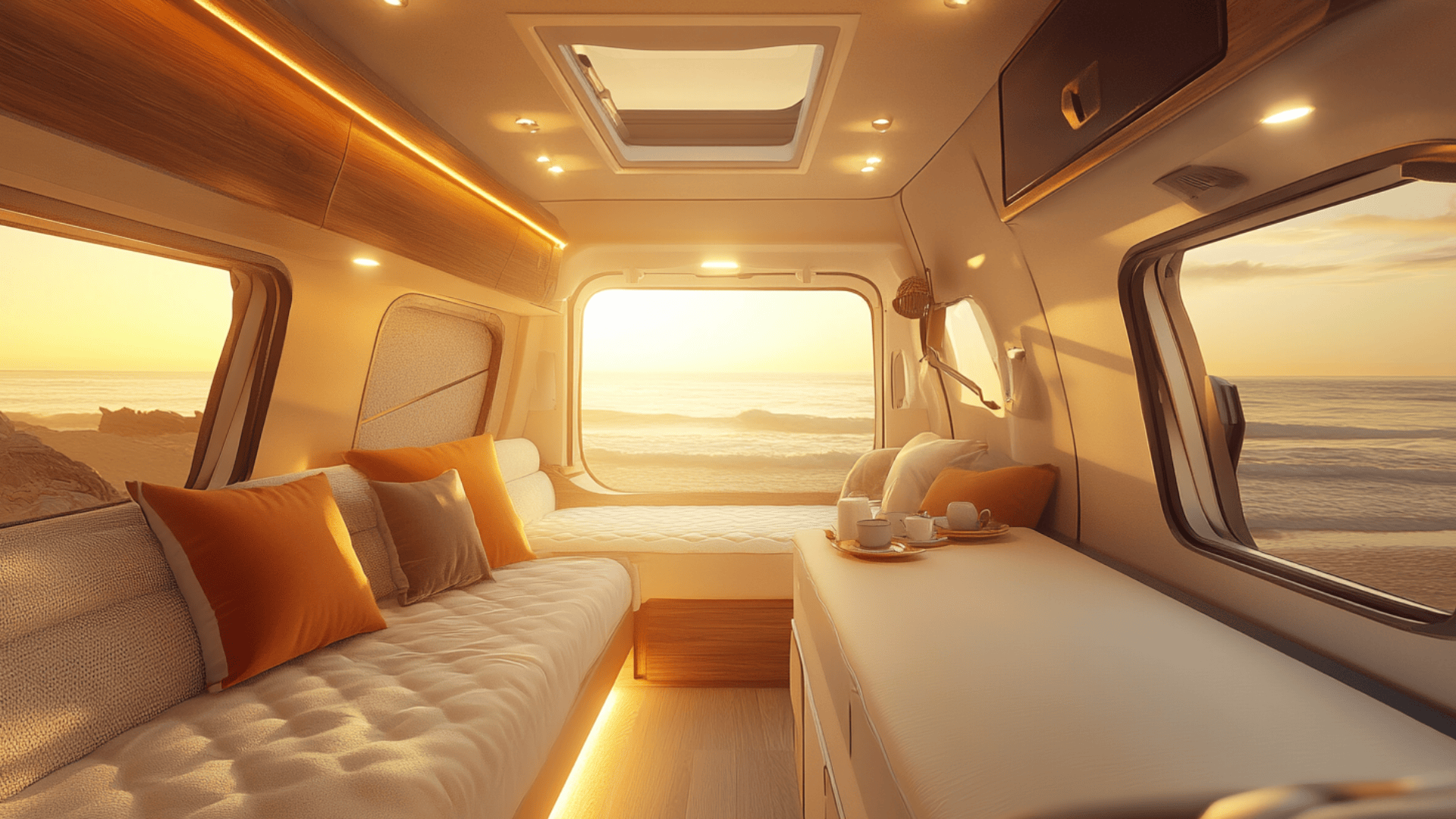
Most Class B vans feature versatile sleeping arrangements that adapt to your daily needs. You might find beds that convert to daytime seating, fixed platforms with storage underneath, or even pop-up roofs that create bonus sleeping space.
The beauty lies in their flexibility—a cozy dining nook by day becomes your bedroom by night.
2. Kitchen & Bathroom Solutions
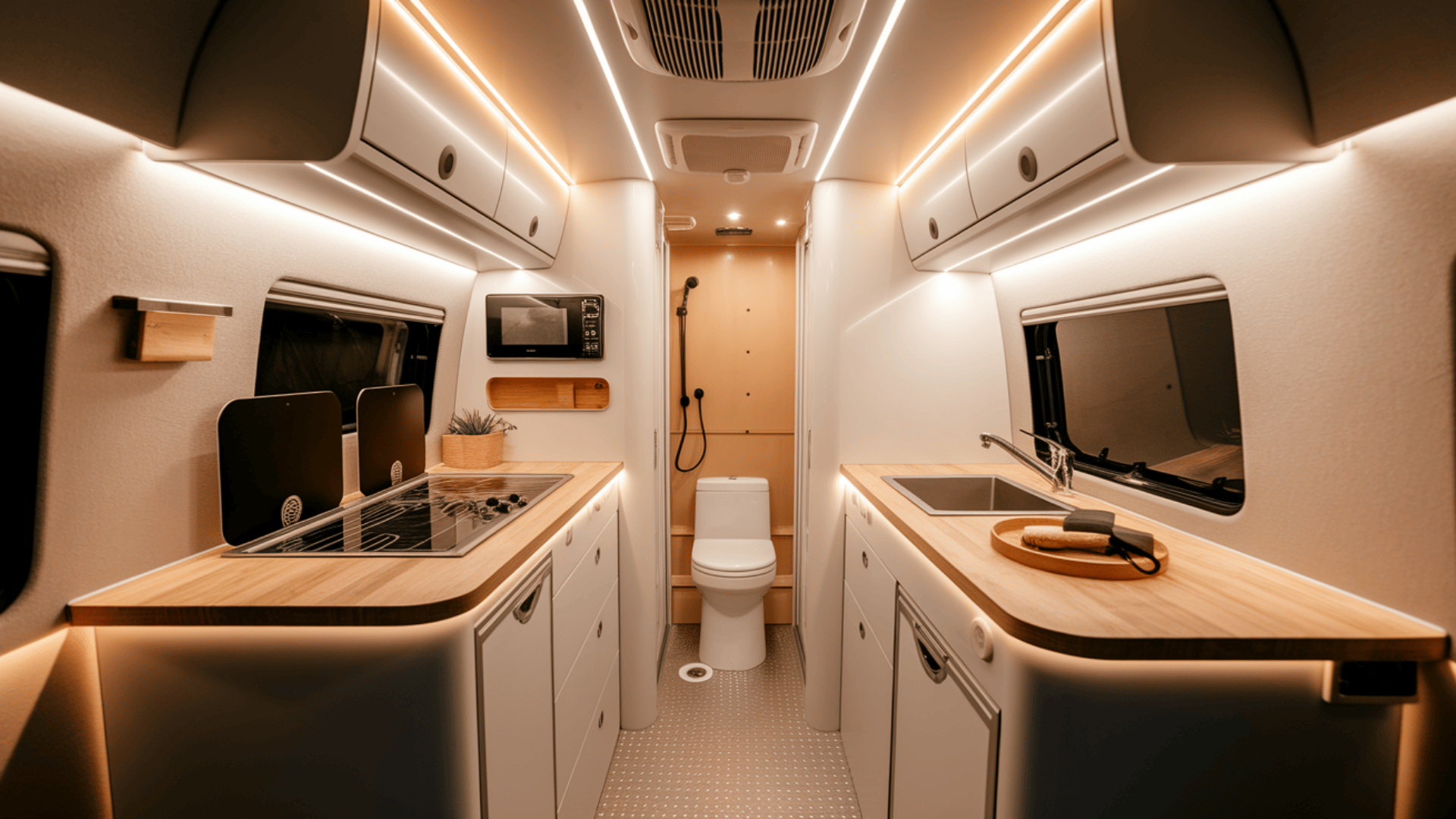
The kitchen area, typically a compact galley layout, includes all the essentials: a small cooking stove, a sink, a mini fridge, and sometimes a microwave. Though tight, these kitchens are where van travelers whip up surprisingly impressive meals.
For bathroom needs, most Class B vans utilize a “wet bath” where:
- The toilet and shower occupy the same space
- Everything is waterproof and designed to get wet
- A curtain or door contains splashing water
Pro Tip: Many seasoned van travelers invest in quality quick-dry towels and bathroom organizers to make wet bath life much more manageable.
3. Smart Storage & Technology
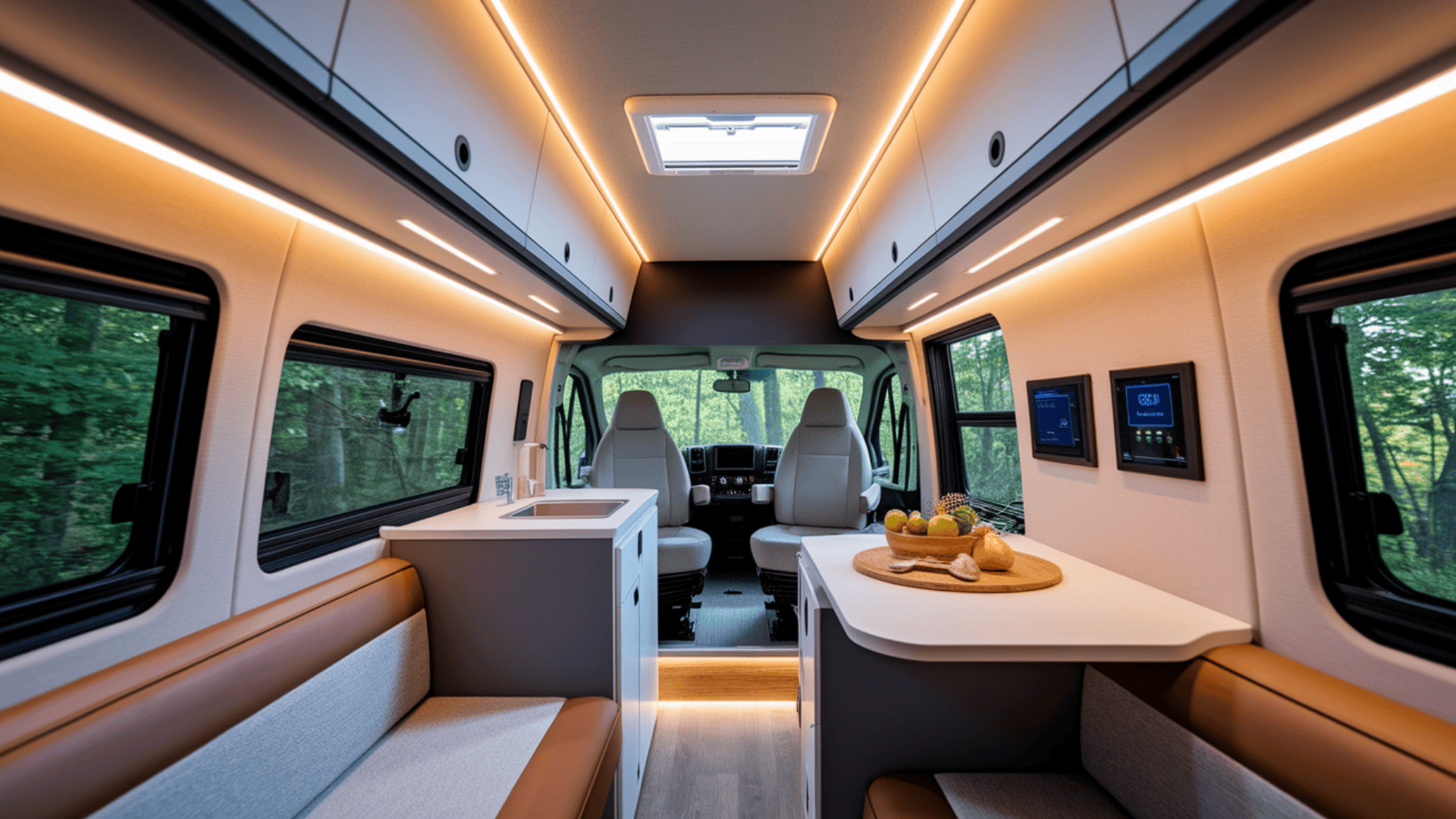
Modern Class B vans excel at maximizing every inch through intelligent storage solutions and cutting-edge technology. Cabinets wrap around upper walls while multi-functional furniture does double or triple duty.
Today’s vans often come equipped with solar power systems, lithium batteries, and digital control panels that let you monitor everything from water levels to battery status with a touch.
Class B vs Class B+ vs Class C: What’s the Difference?
For newcomers to the RV world, the various classifications can be confusing. Understanding the key differences between these similar-sounding categories helps you narrow down which type best aligns with your travel needs and lifestyle preferences.
Class B: The True Van
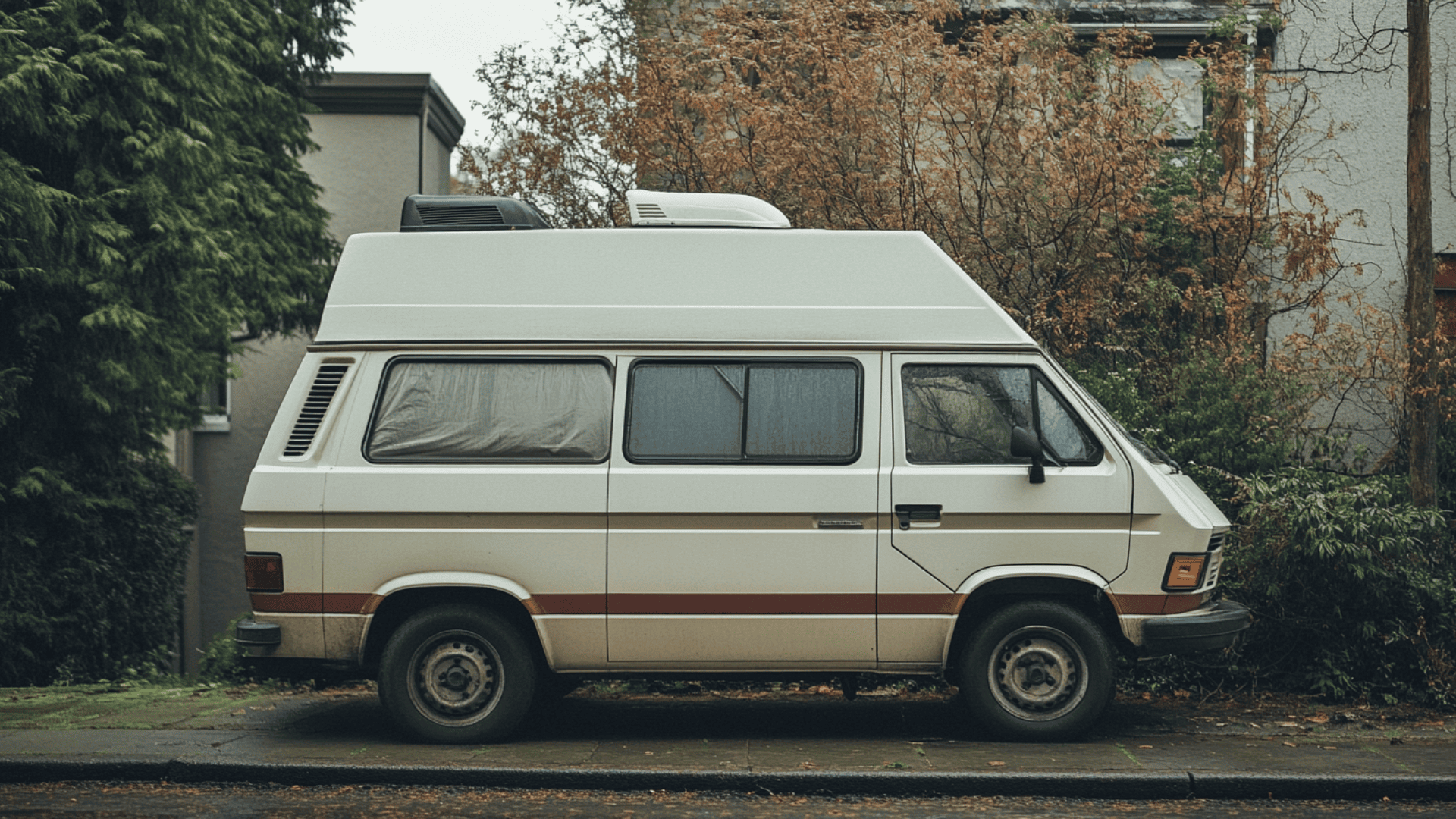
The purest form of van life, a Class B keeps the original van shell with minimal exterior modifications. These are the easiest to drive and park in standard spots, offer the best fuel economy, and serve as perfect companions for solo travelers or couples seeking simplicity and freedom.
Their stealth factor makes them ideal for urban exploration and boondocking in less obvious locations.
Class B+ & Class C: Scaling Up

The Class B+ represents a middle ground—slightly larger than standard Class B vans and built on a modified van chassis. This design provides more interior space while still maintaining relatively good handling.
The bathroom areas tend to be more comfortable, and some models offer additional sleeping arrangements.
When families need more room, Class C motorhomes step in with their distinctive over-cab sleeping area. Built on a truck chassis rather than a van, these larger vehicles sacrifice some maneuverability for comfort:
- Dedicated sleeping areas for 4-6 people
- Separate bathroom and shower spaces
- More kitchen counter space and larger appliances
Fact Check: Despite the name sequence, Class B+ is not officially recognized by the RV Industry Association—it’s a marketing term that helps categorize vehicles that fit between traditional Class B and Class C motorhomes.
Making Your Choice
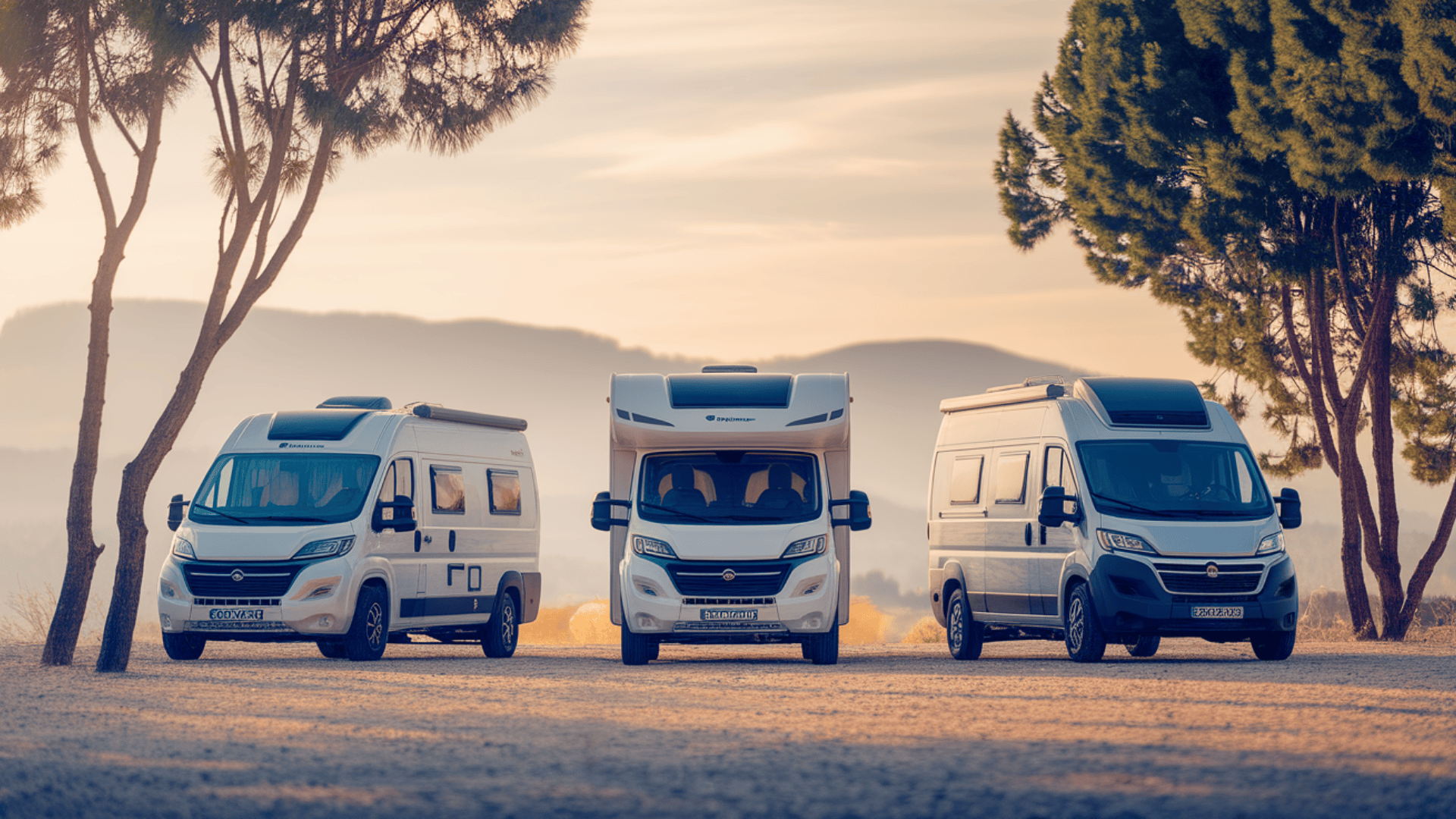
Your ideal motorhome depends on your travel style, number of travelers, and comfort requirements. Consider how you’ll use the vehicle:
- Will you primarily stay in campgrounds with hookups, or do you dream of self-sufficient boondocking?
- Are you comfortable driving and parking a larger vehicle? Do you value fuel efficiency or interior space more?
Your answers will point you toward the perfect home on wheels.
Pros and Cons of Class B Motorhomes
When considering a Class B van, it’s important to weigh what you gain against what you give up. These compact homes on wheels offer unique advantages while also coming with some limitations.
Understanding these trade-offs helps you make an informed decision about whether this style of RV matches your travel goals, budget, and lifestyle expectations.
The Bright Side

Class B vans excel at flexibility and ease of use. They drive much like a regular van, making them accessible even for those nervous about handling larger vehicles.
You can park them in standard spots, navigate city streets with confidence, and even fit them in many home garages.
Their smaller size brings practical benefits too. They use less fuel than their larger cousins, typically cost less to maintain, and can go places bigger RVs simply can’t reach.
“My Class B has taken me down forest roads where Class A owners could only dream of going. The freedom to truly go anywhere is priceless.” – Sam, van lifer since 2018
The Trade-offs
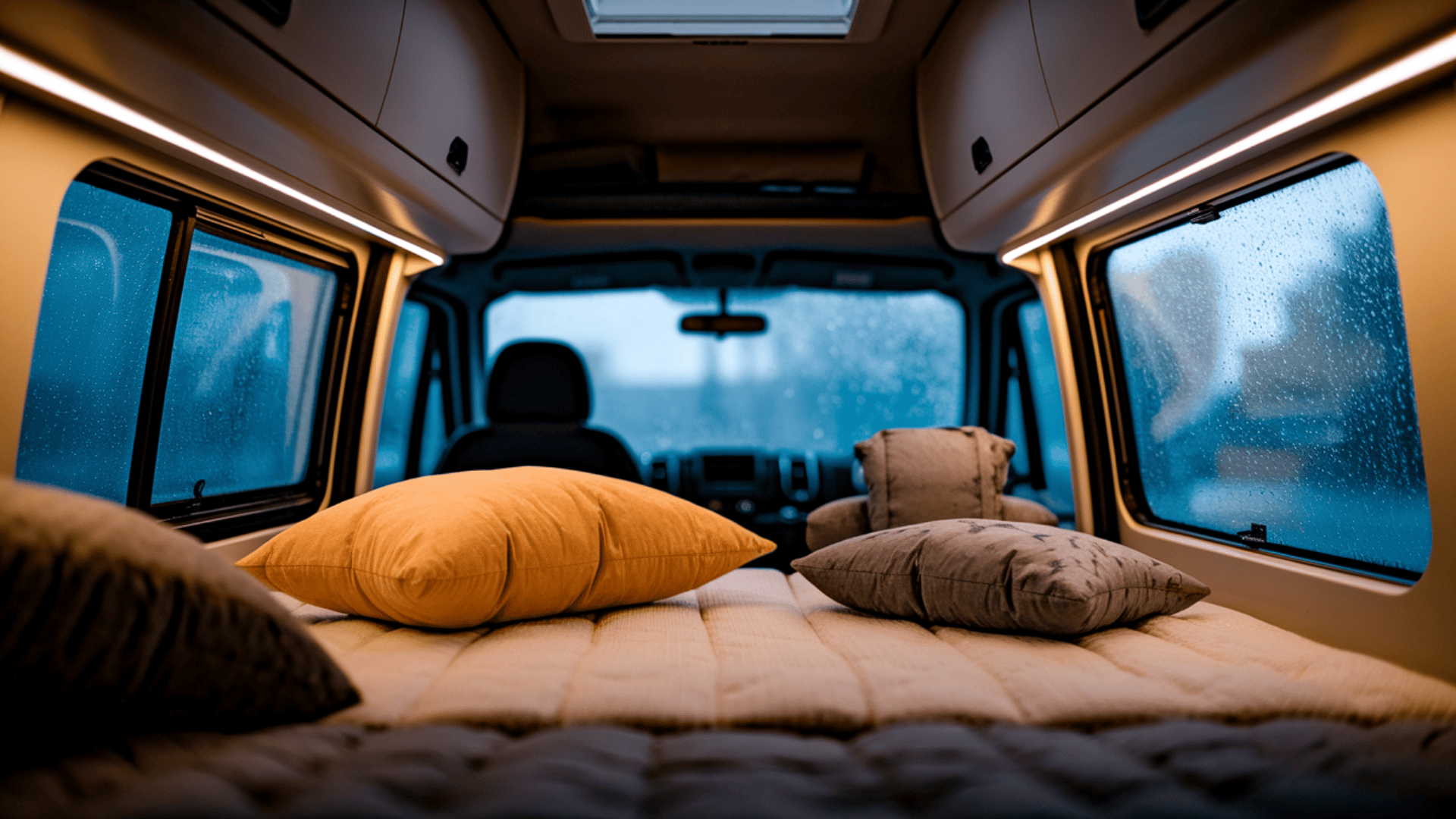
The main drawback is obvious: limited space. While clever design makes the most of every inch, you’re still working with a van-sized footprint. This means:
- Smaller tanks for fresh water, gray water, and black water
- Less storage for gear, food, and clothing
- Tight quarters that can test relationships on rainy days
- Fewer luxury options like slide-outs or full-sized appliances
Despite their smaller size, Class B vans often carry premium price tags, sometimes costing as much as larger RVs with more amenities. This reflects their specialized design and the growing popularity of the van life movement.
Specs and Performance to Consider
When shopping for a Class B van, understanding the key specifications helps you compare options and find your perfect match.
These technical details might seem dry at first glance, but they directly impact your daily experience, from how comfortable you’ll feel to where you can travel and how much you’ll spend on fuel.
1. Size and Weight Considerations
Most Class B vans measure between 16 and 24 feet long and about 7 feet wide. Their weight typically ranges from 6,000 to 14,500 pounds, depending on the base vehicle and build features.
This matters not just for driving performance but also for where you can take your van—some mountain roads and bridges have weight limits.
| SPECIFICATION | TYPICAL RANGE | WHY IT MATTERS |
|---|---|---|
| Length | 16-24 feet | Affects parkability and maneuverability |
| Width | ~7 feet | Determines interior space and tight road capability |
| Weight | 6,000-14,500 lbs | Impacts fuel economy and road restrictions |
| Towing | Up to 7,500 lbs | Allows bringing boats, small cars, or toys |
| Sleeping | 2-4 people | Defines how many can travel comfortably |
2. Base Vehicle Options
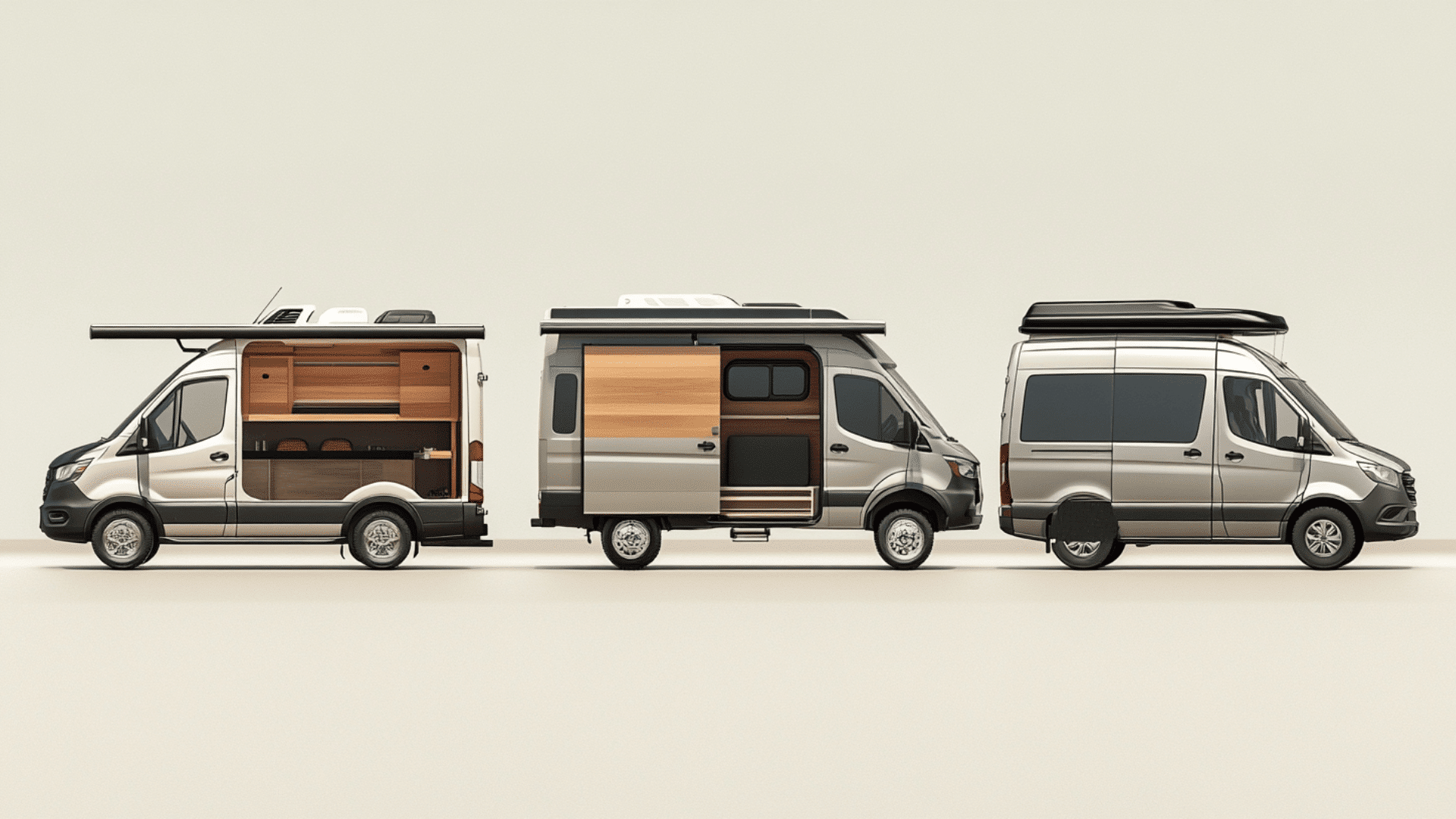
The foundation of any Class B is its chassis, with three dominant platforms:
- The Ford Transit® offers good value and widespread service availability.
- The Ram ProMaster® provides the widest interior space due to its straight walls.
- The Mercedes Sprinter, while pricier, offers diesel efficiency and potentially longer vehicle life.
Pro Tip: When test driving, check the turning radius and blind spots. Class B vans vary significantly in visibility and handling, which will affect your daily driving experience.
3. Comfort Systems
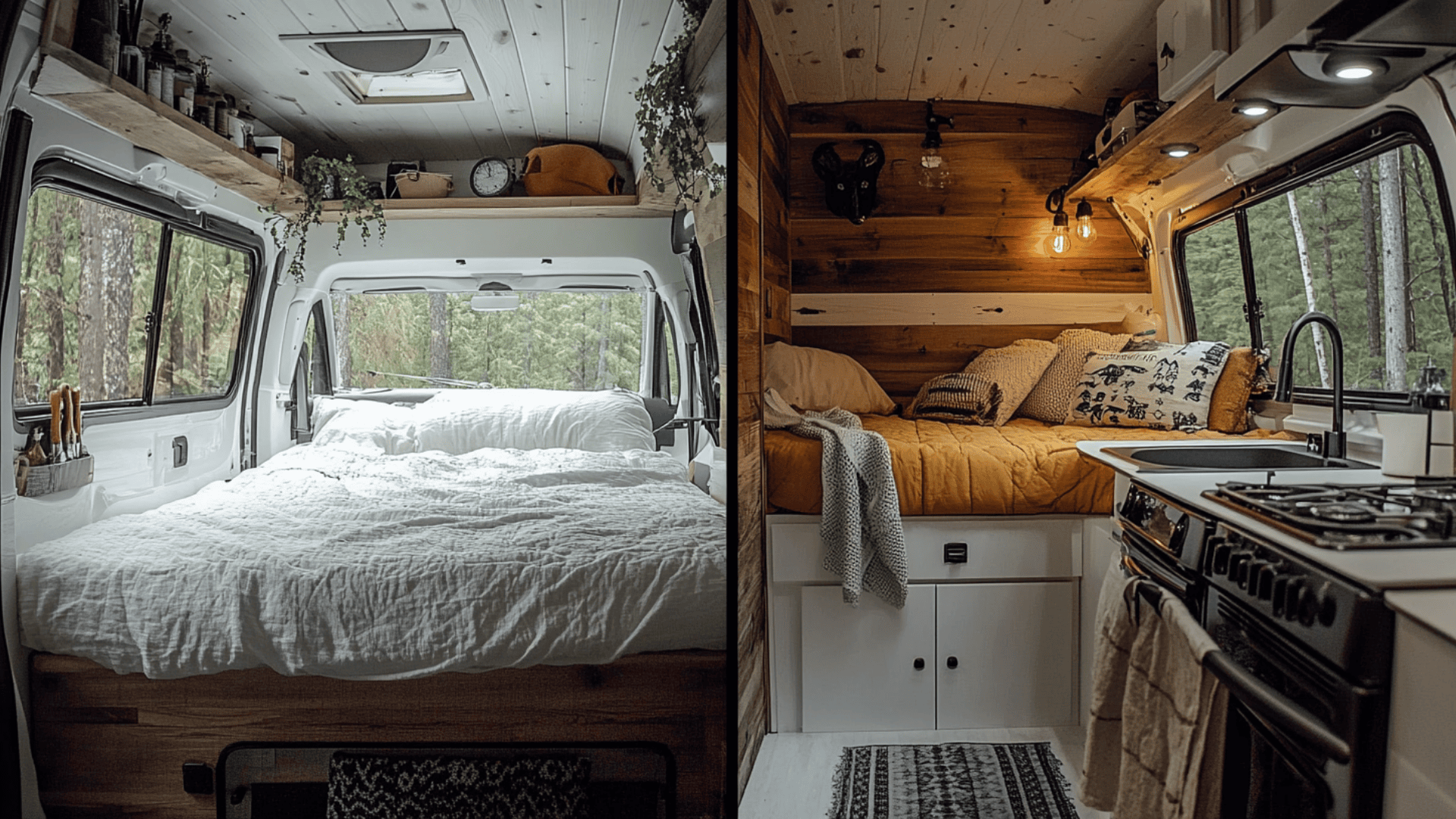
Class B vans range from basic to surprisingly luxurious. Entry-level models provide simple amenities, while high-end builds include heated water systems, leather interiors, and advanced climate control.
Your comfort needs and budget will guide this choice.
Is a Class B Camper Right for You?
Finding your perfect match in the RV world comes down to how you plan to travel and live. Not every RV type suits every traveler, and Class B vans have specific strengths and limitations that align better with certain travel styles.
The key is to honestly assess your needs, space requirements, and how you’ll actually use the vehicle rather than how you imagine using it.
1. Your Ideal Travel Style

Class B vans shine for certain travel patterns. They’re perfect companions if you enjoy frequent weekend escapes or if spontaneity drives your adventures.
Their grab-and-go nature means you can decide on Friday afternoon to be in the mountains by sunset. They also excel for travelers who split time between natural settings and urban environments.
Unlike larger RVs that require special parking considerations, a Class B can easily transition from a remote forest road to a downtown parking garage.
2. Who Thrives in Class B Living?
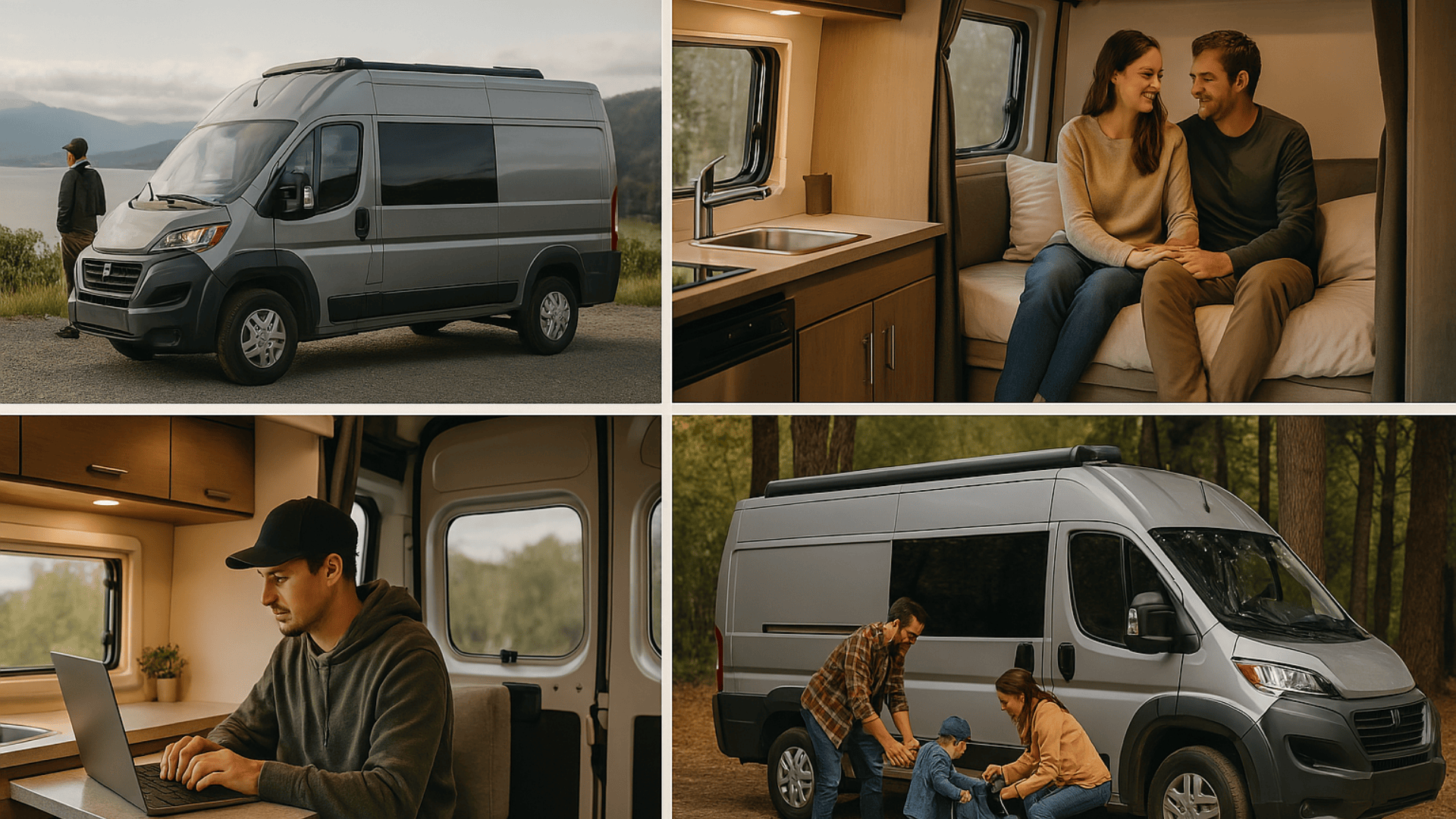
These compact homes particularly suit:
- Solo travelers seeking simplicity and independence
- Couples comfortable with shared space
- Digital nomads needing mobility between work locations
- Weekend warriors who camp part-time
Families with young children can make it work with careful planning, but the space constraints become more challenging as children grow.
3. Financial Considerations
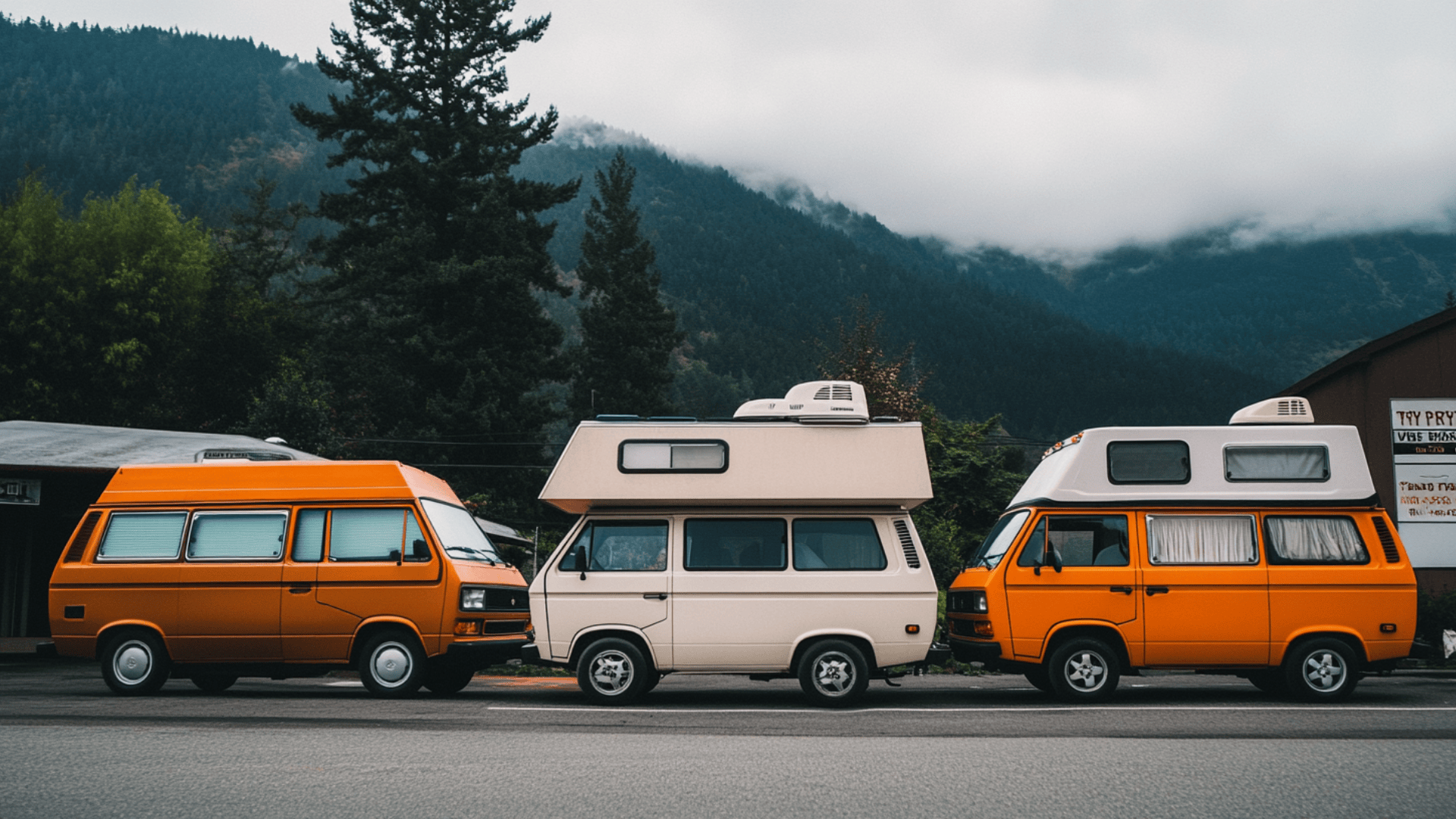
New Class B vans typically cost between $40,000 and $200,000, with premium models from manufacturers like Winnebago, Airstream, and Pleasure-Way commanding top dollar. Used options start around $25,000 for older models.
Essential Advice: Rent before you buy. Spending a weekend (or ideally a week) in a Class B will reveal whether the space works for your needs, habits, and comfort expectations.
Many renters discover they need more room—or, conversely, that they need less than they thought.
“The perfect RV isn’t the most expensive or the largest—it’s the one that matches how you actually travel, not how you imagine you’ll travel.” – RV Buyers Guide
Final Notes
Class B campers offer that sweet spot between adventure and comfort. Their clever designs maximize small spaces while giving you the freedom to roam without the stress of driving a massive vehicle.
Though they come with space limitations and sometimes hefty price tags, their versatility makes them perfect for many travel styles.
They handle both city streets and forest roads with ease, letting you camp anywhere from urban spots to remote wilderness.
As more people seek a connection with nature without giving up basic comforts, Class B vans continue growing in popularity. Now that you understand what these compact wonders offer, you can better decide if a Class B camper aligns with your ideal road life.

